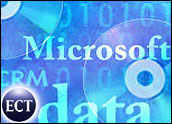
Cisco Systems has released the next version of its Unified CRM Connector. Like previous versions, it links into the Microsoft CRM application to provide integrated contact center-CRM functionality.
Version 3.0 of the Unified CRM Connector, however, is much more appealing to users than its predecessors because it integrates into Microsoft’s latest CRM version — Microsoft Dynamics CRM 3.0.
“We are very impressed with what they have done with 3.0,” Richard Smith, vice president of CRM strategy at Green Beacon, told CRM Buyer. “It is an excellent platform that organizations can build on.”
The demand for out-of-the-box integration between contact center equipment and systems and CRM applications is gaining significant momentum, he noted.
For organizations that want to quickly set up inbound or outbound marketing operations or other contact center offerings, “being able to manage these features with just a couple of clicks saves time and increases productivity,” said Smith.
If the product is VoIP-based, he added, integration into third party applications is much easier.
New Features
One new feature in the product is Internet Protocol (IP) phone service, which pushes complete customer information to Cisco Unified IP phones from inbound calls. Agents are able to view customer contact information from any Cisco XML display-capable Unified IP phone.
The VoIP concept is becoming much more appealing to organizations, Smith observed, because of the cost factor and because of the ability of users to procure equipment and services from one vendor.
“Overall, the cost of leveraging VoIP is very attractive — particularly when considering satellite offices or multiple office scenarios,” he said.
Other new features include click-to-dial functionality for accessing CRM contact records, call-duration tracking, and detailed call-information capture.
The CRM Connector can also integrate into other Microsoft applications, Cisco’s Brian McDonald, senior marketing manager, worldwide commercial marketing, told CRM Buyer. “With Outlook, for example, there is a very familiar look and feel for the user, which makes the application more intuitive.”
Some Limitations
There are limitations to Unified CRM Connector 3.0, Smith pointed out — particularly with respect to its service capabilities.
“It is still a little lean in support call functionality, with the exception of new service scheduling,” he said, noting that the service functionality in Microsoft Dynamics CRM is largely unchanged since the first release.
Also there are functionality problems — with voice recognition systems, to name one example — that the industry has yet to solve. “This has been a particularly difficult piece for a lot of vendors,” Smith remarked.























































